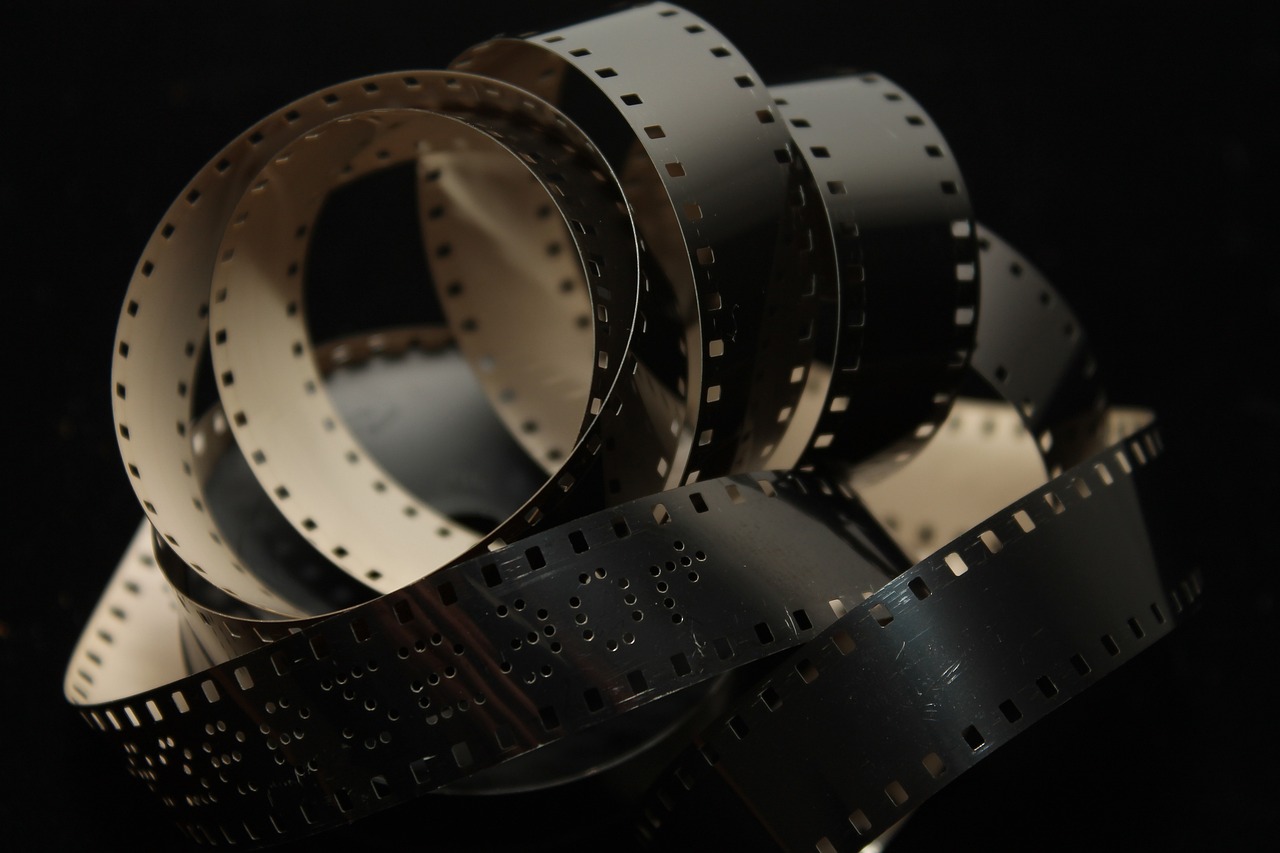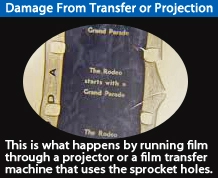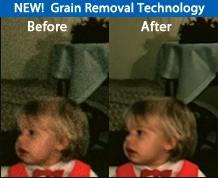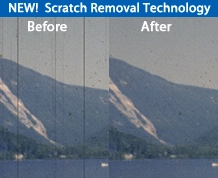Digitize Your Past Into 4K Quality Memories
Preserve Your Families Memories For A Lifetime.
Your old home movies, film reels, and videotapes hold irreplaceable moments — first steps, family vacations, and loved ones no longer with us. Don’t let time erase them. Transfer your memories before its too late!
Address
1490 S Price Rd. Ste 305 Chandler AZ 85286

Video Conversion Experts
For over 40 years, our family‑owned lab has combined heartfelt care with broadcast‑studio‑grade equipment to transform your home movies, film reels, photos, and slides into timeless digital treasures. Using cutting‑edge 4K digitization and proprietary restoration — from advanced scratch removal to 95% grain reduction and vibrant color correction — we bring every smile, laugh, and memory back to life with breathtaking clarity. Trust us to safeguard your legacy at a fraction of the cost of big‑city labs, so you can relive and share your story for generations to come.
What Makes Us The Best
Broadcast Equipment
Transferring your memories with industry leading equipment and technology
Restoration Services
We offer both advanced scratch and grain removal services with stunning results
Professional Formats
Transfer your memories into a wide range of professional and consumer formats
40+ Years Experience
For over 40 years we’ve been digitizing and restoring your memories with care.
Digitized by Hand
Every one of your precious memories is carefully transferred by hand.
Customer Focused
If you're not happy, then neither are we! We'll work hard to make it right!
The Best Video And Film Conversions
Leading Technology and Eqiupment
We are the leading 8mm, Super 8, 16mm and 35mm film transfer lab in the world. It is our equipment and restoration technology that sets us apart from the competition. No one else is offering anything like it, and the results speak for themselves!
Our Services
Slides
Those slides aren’t getting any younger! Transfer today and share them with your family!
Photos
That bin of old photos is dying to be brought out of the closet! Digitize them today!


About us
Experts in Memory Preservation — For Over 40 Years.
We’ve been preserving family memories for over 40 years, combining industry‑leading technology with a personal touch. Our dedicated team treats every film, tape and photo as if it were our own — ensuring your most precious moments live on in stunning digital quality.
- Fast Turnaround, Secure Handling, and Digital Backups
- Satisfaction Guaranteed — We treat your memories with care!
- Industry‑leading Film‑Lab & Broadcast‑Studio Quality Equipment
- State‑of‑the‑Art Scratch, Grain, and Color Correction Services
Some Of Our Amazing Clients
Testimonials
Our Satisfied Customers!
Common Film Transfer Questions
DVD is the most popular format we produce. We use 25+ and 100 year professional DVDs. It is true that not all DVDs last forever. In fact, government studies show that a good percentage of DVDs (20%) will only last about 10 years on average. Yes, 10 years! Some will start to fail around 5 years. We know this first hand because we used average DVDs about 10 years ago and started to get a 3% return rate from customers that we did work for less then 5 years prior. So, DVD is a convenient format but not a long lasting format like most people thought. So, at that point we moved to a professional DVD that has a 25+ year life time. So, I would not be afraid of using DVD. You just have to know the limitation of using DVD. If you truly want to archive your 8mm, Super 8 or 16mm film to a digital format then you really need to consider getting an editing format HD to 4K resolution like AVI, MOV (including ProRes) or MP4 Editing files. You might ask, why do I want an editing file, I just want a DVD from my film conversion. The reason is that even though DVD is a convenient format it is not a digital master of your film. DVD is highly compressed and is only about 40% of the resolution of your film. We offer more editing formats that any other company. We also offer professional formats like DPX. DPX is the ultimate format. There is no compression. There is 1 file per frame of film. The best quality also means that the files are large. DPX at 2K resolution runs about 1 TB per hour of film. In addition, editing DPX requires a minimum of a 2 drive RAID 0 setup, 16GB of RAM, a QUAD-Core processor and a editor that support DPX like Premier Pro CS6 or newer. Editing files for 16mm and 35mm film requires a higher resolution format to create a digital master as good as the original 16mm or 35mm film. Today, DPX is the only format capable of providing that resolution and detail of the original 16mm and 35mm film. For 16mm film you want to scan to 2k DPX files. For 35mm film you want to scan to 4K DPX files. As mentioned, DPX is not the easiest format to edit. For this reason we have many customer order HD/2K AVI or HD/2K ProRes for easier editing. Many of these customers also want their 35mm and 16mm film converted to DVD or BluRay so they can easily watch it and make copies for other family members. That’s a great idea.
Many times we are asked “What resolution should I convert my 8mm or Super 8 film at?” That’s a good question. It depends on your goals and also on what format you want to go out to. If you want to archive your film to a digital format like DVD, BluRay or an editing format we recommend scanning your 8mm or Super 8 film at 2K resolution. HD (1080) is not quite enough. I know there are many people that would argue with us but the fact is that we’ve done about 50 comparisons between our Pro HD and Pro 2K process and in 49 of those comparisons the Pro 2K creates video from Super 8 film that is about 25-30% sharper. So, from our experience a 2K scan is required if you want to archive your 8mm film to a digital format. We’ve talked to several film scanner manufactures and asked this same question. The answer is that each scanner, no matter how sophisticated, will loose some quality during the scan. There are many variables and many opportunities to loose quality along the chain from the lighting to the pickup device to the lenses and on and on. So, even if you have a 1080p scanner you might only be getting an effective scan of 700 or 750 lines because of the loss through the system. This explains why a 480 line frame by frame machine (using a modified projector and camcorder) gets so much less of the 8mm film’s quality compared to a true 480 line scanner. The frame by frame machines looses a lot more of the quality through the system compared to the 480 line scanner. As a general rule, the more expensive the film scanner, the better quality and higher resolution you will get in the digital format you choose. It’s kind of like copying a color photograph. The more expensive the copier, the closer the copy looks compared to the original.
Flash drives are rated to last about 10 years (twice that of an older spinning SATA drive) because there are no moving parts. The drive doesn’t degrade with age. What degrades a flash drive is the number of times you are writing the memory cells. Basically the more you use (read/write) to the drive the shorter life time it will have. So, we recommend that once you get the flash drive from us you copy the contents to a computer and keep the flash drive in a safe place for long-term storage. You should replace the drive about every 5-10 years.
Yes! Most film scanning machines around 10+ years ago used a modified projector and camcorder to transfer your precious memories to a low quality VHS tape or DVD. In doing so you only got about 40% of the details from your film. By transferring your film at our Pro HD or Pro 2K you will get 2-3 times better quality then your previous transfer. Also, film shrinks over time and will become warped and brittle. Film will last about 40-65 years depending on how it was stored. So, this next transfer will most likely be it’s last. That’s why we recommend the Pro 2K scan for 8mm and super 8 film. You will never have to come back and re-scan the film. This is also the reason we recommend getting back some sort of digital files like 2K MP4 instead of or in addition to DVD/BluRay. DVD/BluRay are being replaced by digital files like MP4. MP4 is everything DVD/BluRay are not. You don’t need a special player (they play everywhere including Smart TVs, Macs, PCs, etc.). MP4 is ready to be backed up or posted online to share by YouTube, iCloud backup or Google Drive (DVD/BluRay cannot). MP4 can be edited (DVD/BluRay cannot). MP4 will last for decades into the future (as soon as your DVD player breaks you will have trouble finding one since they don’t manufacturer them anymore.
The second most frequently asked question we get asked is, “how can I create a digital master from my super 8 film and ensure it’s safe keeping for decades to come?”. The first part is the hardest. Creating a digital master as good as the 8mm or Super 8 film requires scanning one level above the film’s resolution. In general, 8mm and Super 8 film resolution is around 900 to 1200 lines. So, we recommend a 2K scan to ensure you get all the details. Our studies also indicate that scanning 8mm at 2K is required to truly archive the film. We’ve done several side by side comparisons between HD and 2K and 95% of the time the 2K scans look noticeably better more detailed. After you have a good digital master you need to make sure it will be around for decades to come. Using today’s technology that means you need the files on 2 separate drives at 2 separate locations. Those drives should not be hooked up to a computer or running. They should only be plugged in and used to check the files about every 6 months. If one fails immediate use a new drive to copy the files to. Even if the drives don’t fail they should be replaced about every 5 years. Lastly as solid state drives (SSD) become cheaper and larger you should consider moving your files to a SSD drive.
8mm and Super 8 film conversions are the most common services we perform. We can convert film to DVD and Super 8 film to DVD or BluRay but this is challenging because the frame size is so small. Our Pro 2K film conversion service is designed to get all of the details from a film to DVD transfer. For more information on super 8 film conversion to DVD and Super 8 conversion to DVD services, please contact us.

Our Promise
100% Satisfaction Guarantee
Our service is the best in the business and so is our customer support. If for any reason you are unsatisfied with our results please contact us to discuss any options. *Quality of film conversion and restoration is dependent upon the condition of existing film stock and/or videotape; severely deteriorated original materials may be beyond the reach of even the most sophisticated restoration methods.




